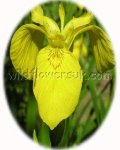 | ||
Perfect for pollinators Common St John’s Wort –Hypericum Perforatum– is a good general-purpose meadow plant that grows well on a wide range of free draining soil types where there is plenty of sunlight. Plants typically grows to about 2 foot in height and produce bright yellow flowers from June to September. Common St John’s Wort is a useful plants for bees and looks best growing with other wildflowers that bloom in mid to mid late summer such as Common Agrimony, Greater Knapweed, White campion and Small Scabious. Alternative Names for Common St John’s Wort include Perforate St John’s Wort How to grow Common St John’s Wort Seeds Common St John’s Wort seeds should be sown in spring or autumn, either outside, where they are to flower, or in seed trays and covered lightly with compost. Common St John’s Wort seeds are usually easy to germinate and the seedlings, which are quick to develop, can be pricked out and grown on, for planting out later in the year. RHS Perfect for Pollinators. The RHS Perfect for Pollinators mark is only given to plants that support pollinating insects in gardens. Bees, butterflies, moths, hoverflies and many others visit flowers to feed on nectar and pollen; while doing so they transfer pollen and increase seed set and fruit development. Find out more at: rhs.org.uk/plants To discover more plants for Bees, simply enter the word "pollinators" into the search box above. To buy Common St John’s Wort seeds To purchase Common St John’s Wort seeds, please select a quantity above and click add to cart. To ensure the best chance of success, we sell all of our wildflower seeds by weight, which ensures each wildflower seed packet contains a good quantity of seeds. The recommended sowing rate is 1 gram per square metre, and the number of Common St John’s Wort seeds per gram is approx. 9000. All of our Wildflower seed packets contain seeds of Native British provenance. Summary type - perennial, colour - Yellow, height - 25 to 50cms, flowers June, July, August, September, habitat - Deep Shade (Dense Woodland), Dry Grassland (clay, loam), Chalk and Limestone Grassland, Attracts Butterflies and Bees TOXIC, | ||
Printed 21/12/2025 11:48:23
st45_1 type perennial colour yellow height 25 to 50cms flowers june july august september habitat deep shade dense woodland dry grassland clay loam chalk and limestone grassland toxic attracts butterflies rhs perfect for pollinators pollinating insects bees butterflies moths hoverflies







 added to basket
added to basket